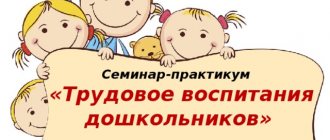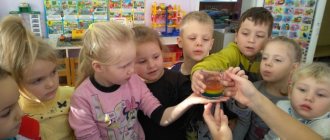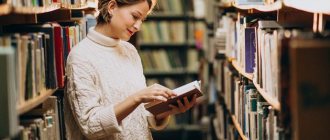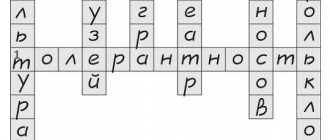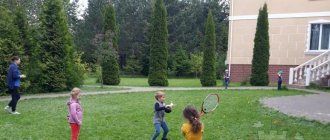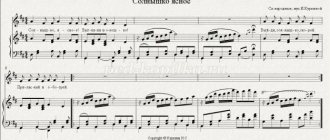Active teaching methods in kindergarten Seminar for teachers. - presentation
Active teaching methods in kindergarten Seminar for teachers
Life in constantly changing conditions requires a specialist to be able to solve new, non-standard problems that regularly arise. A sign of today's times is increased professional pedagogical mobility. New tasks and directions for the development of education also determine special requirements for the personality and professional competence of teachers.
Increasing the professional competence of teachers is based on enhancing their cognitive activity. This helps them to demonstrate independence, “pushes” them to creative search, develops the ability to analyze and make decisions in various problem situations. All new developments are subsequently used in working with children. And, of course, modern pedagogy gives primacy in teaching active methods.
Active teaching methods are a system of methods that ensure the activity and variety of mental and practical activities of students in the process of mastering knowledge.
The task of active teaching methods is to ensure the development and self-development of the student’s personality based on identifying his individual characteristics and abilities, with a special place occupied by the development of theoretical thinking, which involves understanding the internal contradictions of the models being studied.
The theoretical and practical foundations of the problem of using active teaching methods are set out in the works of L. S. Vygotsky, A. A. Verbitsky, V. V. Davydov. Among the starting points of the theory of active teaching methods was the concept of “subject content of activity”, developed by academician A. N. Leontyev, in which cognition is an activity aimed at mastering the objective world.
Thus, active learning methods are learning by doing. L. S. Vygotsky formulated a law according to which learning entails development, since personality develops in the process of activity, which fully applies to preschool children.
In preschool age, the usual form of activity is play, so it is most effective to use it in the educational process. A natural play environment, in which there is no coercion and there is an opportunity for each child to find his place, show initiative and independence, and freely realize his abilities and educational needs, is optimal for achieving these goals.
Game methods provide a search for solutions in dynamic, unstable conditions; they allow you to work out and compare several possible options. An emotional mood, proper motivation and passion remove the impact of artificiality. The pedagogy of cooperation and the joint search for the best solutions make it possible to practice and systematically improve the best options for collective action. From the dominance of the universal slogan “SIS - sit and listen” to the active one: “DID - think and do!” »
Active teaching methods include: - problem situations, - learning through activities, - group and pair work, - business games, - dramatization, theatricalization, - creative game "Dialogue", - "Brainstorming", "Round Table", discussion, -method of projects, -methods of surprise, admiration, confidence, success, -method of heuristic questions, -game design and others.
The project method is one of the teaching methods that promotes the development of independent thinking, helping the child to develop confidence in his own abilities. It provides for a system of education in which children acquire knowledge and master skills in the process of completing a system of planned practical tasks. This is learning through doing.
Relaxation - the goal of this method is to increase the energy level in the group and relieve unnecessary tension that arose during the lesson. As a rule, this can be physical education or an outdoor game.
. It is advisable to use the method of heuristic questions to collect additional information in a problem situation. Heuristic questions serve as an additional incentive and form new strategies and tactics for solving a creative problem. It is no coincidence that in teaching practice they are also called leading questions, since a question successfully posed by the teacher leads the child to the idea of a solution, the correct answer.
Brainstorming is a widely used way of generating new ideas for solving scientific and practical problems. Its goal is to organize collective mental activity to find unconventional ways to solve problems.
Modeling is a teaching method aimed at developing imaginative thinking, as well as abstract thinking; involving the study of objects of knowledge on their substitutes - real or ideal models; building models of real-life objects and phenomena, in particular educational systems. In this case, a model is understood as a system of objects or signs that reproduce some essential properties of the original system, the prototype of the model.
The method of admiring is an emotional form of learning something new. To the music of P.I. Tchaikovsky read the poem Winter Road by A.S. Pushkin, then admired the winter landscapes with the children, admiring the beauty of Russian nature.
The research method is a teaching method aimed at students mastering all stages of problem-search activity, developing research skills, analytical and creative abilities. All stages of problem-search activity are carried out by the child, modeling the research process and obtaining a subjectively new result.
Active learning methods have their own distinctive features: - a group form of organizing the work of participants in the educational process; -use of an activity-based approach to learning; - practical orientation of the activities of participants in the educational process; -game and creative nature of learning; -interactivity of the educational process; -inclusion of various communications, dialogue and polylogue into the work; -use of knowledge and experience of students; -activation of all senses in the learning process; -reflection of the learning process by its participants.
AMOs are distinguished by an unconventional technology of the educational process: - they activate thinking, and this activity remains for a long time, forcing, due to the educational situation, to independently make decisions that are creative in content, emotionally charged and motivationally justified;
— develop partnerships; — increase the effectiveness of learning not due to an increase in the volume of transmitted information, but due to the depth and speed of its processing; — provide consistently high results of training and education with minimal effort from students
The transition to active learning methods begins with the use of interactivity in the educational process. With the help of active learning methods, you can develop the ability to work in a team, carry out joint project and research activities, defend your positions, justify your own opinion and be tolerant of others, take responsibility for yourself and the team.
Thus, the use of active learning methods in the educational process of a preschool educational institution contributes to the successful development of an educational program based on the requirements of the Federal State Educational Standard, the creation of a favorable atmosphere for work in educational activities with students, and the development of motivation for cognitive and research activities; accumulation of one’s own work experience and studying the experience of colleagues, systematic, comprehensive work and the competence of teachers.
Motor perception methods
This group of methods refers to active methods of teaching preschoolers to perform physical exercises. All methods in this group can be divided into two main subgroups:
- Methods of performing exercises in a strictly ordered or organized manner. When using these methods, training in performing exercises can be partially implemented, i.e. The exercise is detailed and learned every moment of the exercise. The same action is performed several times to achieve better absorption and automation. At the same time, the teacher regulates the form of movements, the degree of load, the sequence and intervals of its increase, and the inclusion of rest periods in the exercise. These methods allow you to master the execution of individual movements and form a holistic action from them. The selection of individual movements can be selective. For example, movements may be selected that are new to the child or very difficult to master, or require significant effort and more time to master.
- Methods of unordered exercises. The exercise is carried out independently by the child and allows him to choose actions for its execution that will help him achieve his goals and objectives for performing the exercises. Methods of this group are usually used to consolidate children’s physical skills and improve them in older preschool age.
Finished works on a similar topic
Course work Active methods of teaching preschoolers physical exercises 470 ₽ Abstract Active methods of teaching preschoolers physical exercises 220 ₽ Test work Active methods of teaching preschoolers physical exercises 240 ₽
Receive completed work or specialist advice on your educational project Find out the cost
Methods for strictly ordering exercises
This type of method includes the following:
- Method of teaching the performance of motor actions in general. He assumes that motor action is mastered in its full form, focusing on achieving a specific educational task. This includes imitation teaching methods based on imitating the actions of the animal world. This is especially true when mastering general developmental exercises, as well as teaching various types of walking and running;
- Method of teaching the exercise in parts. It involves learning to perform any motor action by first dividing it into individual components, fully mastering them and combining them into a single motor action. These methods are used when it is necessary to divide the movement into parts in order to facilitate the development of its implementation by preschoolers;
- Method of forced-facilitating performance of motor actions. It involves creating external guidelines for the child that provide support for him when performing a movement with specific parameters, as well as creating all the conditions that will help the child perform the action. Simulators, auditory and visual landmarks can be used as external reference points. They help preschoolers master the rhythm, tempo, dynamics of performing the exercise, and also give children a visual representation of the movement that needs to be performed;
- Uniform method. It involves the continuous performance of one exercise for a specific period of time at the same pace, rhythm, with the same intensity and amplitude of movements. The use of this method is relevant when running, learning to swim or ski. Such exercises contain cardio load, which helps develop endurance in the child;
- Variable method. It involves performing one exercise for a specific time period with changing its intensity, tempo, rhythm, speed of performing certain movements, changing the technique of performing movements. It is important to use this method when running with acceleration and performing exercises at different paces.
Methods for unordered exercises
This group of methods includes such methods and teaching techniques that help not only in developing the child’s physical strength and endurance, but also in developing a competitive spirit. These include:
- Game methods. They involve teaching children to perform a physical exercise or a separate motor action in a playful way. This form of learning is characterized by the presence of a bright emotional color and a creative component of activity. Performing exercises has a variable nature and a disordered nature of movements and actions. At the same time, game methods involve the use of an integrated approach to learning, i.e. children master a variety of motor skills and develop various physical properties. The game form of teaching physical exercise has a plot content;
- Competitive methods. They involve learning to perform a physical exercise through the use of competitive action techniques. Physical actions and their implementation during a training session fully reflect its purpose and content. The training session is structured as a competitive activity. Children strive to make the most of their physical skills and abilities to win the competition. The use of the method is characterized by the ability to control the load of children and the development of a high level of sports training of the child.
Get paid for your student work
Coursework, abstracts or other works
